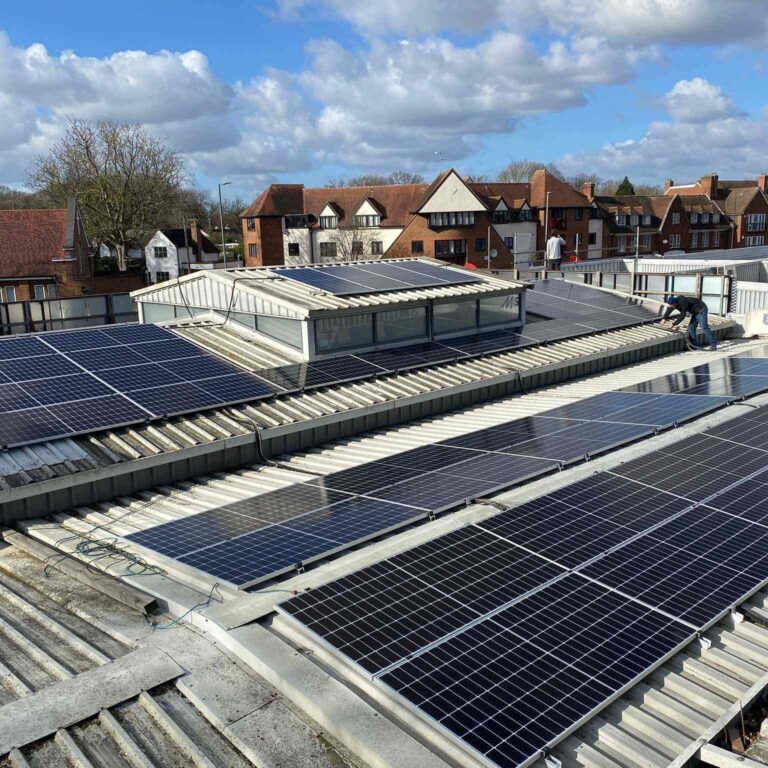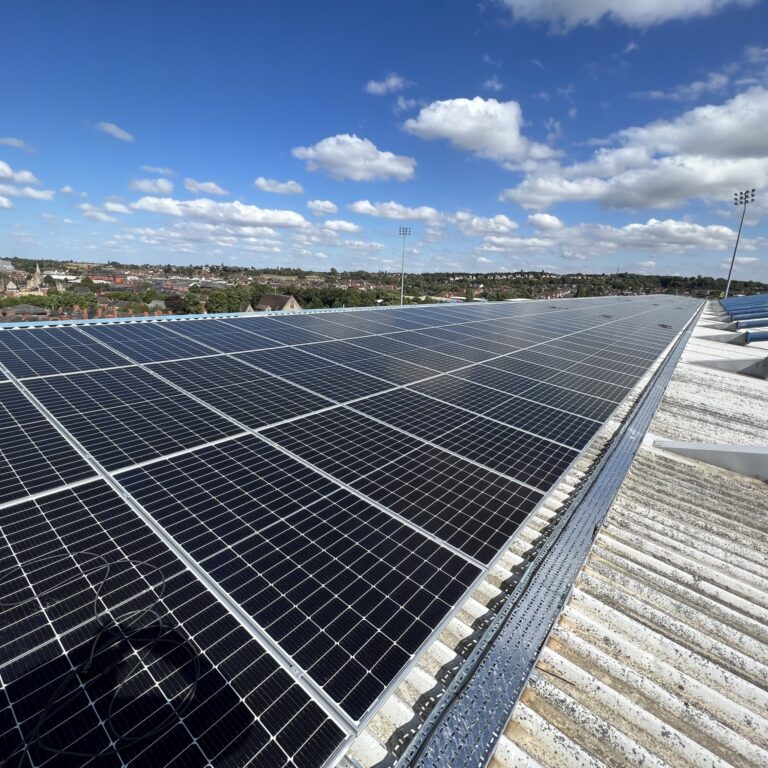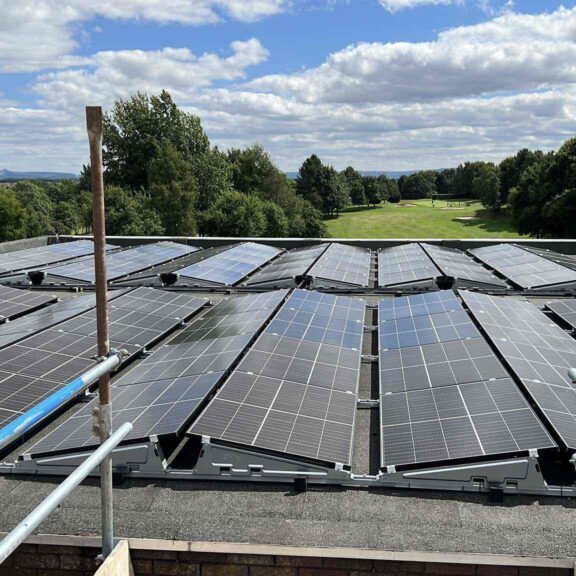As businesses worldwide move toward sustainability and cost efficiency, CAPEX Commercial Solar installations have become a game-changer. Investing in solar through a capital expenditure (CAPEX) model allows companies to gain full ownership of their solar systems, reducing long-term energy costs and enhancing sustainability goals. CAPEX Commercial Solar provides a strategic advantage, enabling businesses to leverage renewable energy for significant financial and environmental benefits.
This article will dive into the CAPEX Commercial Solar model, explore the benefits, discuss cost considerations, and examine how it compares to other financing models, helping businesses understand why CAPEX solar is a valuable investment.
What is CAPEX Commercial Solar?
CAPEX (Capital Expenditure) Commercial Solar refers to a financing model in which businesses purchase and own their solar systems outright, paying for installation and equipment costs upfront or through loans. In this model, the company incurs the initial expense but then benefits from free, solar-generated electricity, leading to long-term savings on energy costs. By investing in a CAPEX Commercial Solar system, companies also benefit from tax incentives, subsidies, and depreciation, which can further lower the net costs.
Unlike other financing models such as leasing or Power Purchase Agreements (PPAs), the CAPEX model enables businesses to have complete control over their energy production, as they own the solar assets. This can lead to greater savings in the long run, especially as energy rates rise.
Key Benefits of CAPEX Commercial Solar
- Long-Term Cost Savings By investing in a CAPEX Commercial Solar system, businesses can significantly reduce their energy costs over time. Once the system is paid off, it produces free electricity for its entire lifespan, which can be 25 years or longer. Given the rising cost of conventional energy, CAPEX solar helps companies shield themselves from future electricity rate increases.
- Full Ownership and Control CAPEX Commercial Solar gives businesses full ownership of their solar systems, which means they retain all rights to the electricity generated. This ownership can lead to greater flexibility and more control over energy consumption and costs. Additionally, having control over the system allows businesses to make upgrades and modifications as needed, unlike with third-party owned systems.
- Attractive Financial Incentives CAPEX Commercial Solar investments often qualify for a range of government incentives, including tax credits, rebates, and accelerated depreciation, which can substantially lower the net cost. In many regions, businesses are eligible for the Investment Tax Credit (ITC) and Modified Accelerated Cost Recovery System (MACRS) benefits, reducing the total cost of the system by up to 50% or more.
- Environmental and Corporate Social Responsibility (CSR) Benefits Adopting CAPEX Commercial Solar supports corporate social responsibility (CSR) goals by reducing the carbon footprint of the business. Solar power is a renewable and clean energy source that reduces greenhouse gas emissions. For companies with environmental commitments, investing in solar aligns with sustainability goals, enhancing the brand image and helping to meet investor and customer expectations around environmental responsibility.
- Hedge Against Energy Price Volatility CAPEX solar systems offer a hedge against fluctuating energy prices. Electricity rates are subject to market volatility, often increasing over time due to demand, inflation, and fuel costs. By generating their own electricity, businesses protect themselves from these fluctuations, enjoying stable, predictable energy costs.
CAPEX Commercial Solar vs. Other Financing Models
While CAPEX Commercial Solar offers many benefits, it’s essential to compare it to other financing options to determine the best fit for a business’s needs.
- CAPEX vs. Leasing In a leasing model, a business leases the solar equipment from a provider, paying a monthly fee for the duration of the lease term. While leasing reduces upfront costs, it usually does not provide the same long-term savings or tax benefits as a CAPEX model. Additionally, with a lease, the business does not own the system, limiting potential savings and control over the system.
- CAPEX vs. Power Purchase Agreements (PPAs) A Power Purchase Agreement (PPA) is another popular financing model where a third party owns, installs, and maintains the solar system on the business’s property. The business then buys the generated electricity at a predetermined rate. While PPAs eliminate upfront costs, the business has no ownership or tax benefits, and savings are generally lower in the long run compared to the CAPEX model.
- CAPEX vs. Loan Financing In loan financing, a business can take out a loan to cover the cost of the solar system. The advantage of this model is that the company retains ownership of the solar assets and can still benefit from tax incentives. Loan financing spreads out the cost, making it manageable for businesses that prefer not to make a significant upfront investment but still want to own the system.
Cost Considerations for CAPEX Commercial Solar
The cost of CAPEX Commercial Solar systems varies depending on several factors:
- System Size and Energy Requirements The size of the solar system depends on the business’s energy consumption needs. A larger system will cost more initially but will also produce more electricity, leading to higher long-term savings. A detailed energy assessment helps determine the optimal system size to meet consumption patterns.
- Location and Installation Complexity The location of the business plays a role in determining installation costs. Rooftop installations may cost less than ground-mounted systems, while complex installations, such as those involving older buildings, may incur higher costs. Moreover, solar exposure and climate in the area can impact the efficiency and output of the system.
- Quality of Equipment Investing in high-quality solar panels, inverters, and racking systems might increase upfront costs but can lead to better efficiency, durability, and overall performance. Quality equipment often has longer warranties and lower maintenance costs, which contributes to savings over the life of the system.
- Incentives and Tax Credits As mentioned, financial incentives play a crucial role in reducing CAPEX costs. The ITC, which currently offers up to 26% credit on the installation cost, is a significant incentive. Additionally, accelerated depreciation through MACRS allows businesses to recover some of the system costs, further lowering the total expense.
How to Maximize the ROI of CAPEX Commercial Solar
To maximize the return on investment (ROI) for a CAPEX Commercial Solar system, businesses should consider the following:
- Optimize Energy Efficiency Before installing a solar system, optimizing the business’s energy efficiency can help reduce overall consumption and ensure the solar system meets the company’s energy requirements without oversizing. Conducting energy audits and upgrading lighting, HVAC, and insulation can reduce energy needs, allowing the solar system to cover a higher percentage of usage.
- Select High-Quality Components Investing in reputable, high-quality solar equipment can enhance the system’s lifespan and efficiency. Premium components with warranties of 25 years or more offer better long-term value and lower maintenance costs, maximizing the system’s output and overall ROI.
- Monitor and Maintain the System Regular monitoring and maintenance can help ensure the system is running optimally, maximizing energy generation and minimizing downtime. Many CAPEX Commercial Solar systems come with advanced monitoring systems, allowing businesses to track performance in real-time and address issues promptly.
- Explore Battery Storage Solutions Pairing CAPEX Commercial Solar with energy storage can increase the system’s ROI by storing excess energy produced during peak sunlight hours for use during high-demand periods. Battery storage also enhances energy resilience and can help businesses avoid peak demand charges.
Conclusion: Is CAPEX Commercial Solar Right for Your Business?
CAPEX Commercial Solar is an excellent investment for businesses looking to reduce energy costs, gain independence from rising utility rates, and meet sustainability goals. While the initial costs can be higher than other financing models, the long-term benefits of ownership, control, and tax incentives make CAPEX solar a financially sound option for companies with the resources to make a capital investment.
By carefully considering factors such as system size, location, and available incentives, businesses can maximize their ROI, making CAPEX Commercial Solar a smart choice for achieving long-term savings and sustainable energy production. For companies focused on reducing their carbon footprint and stabilizing energy costs, investing in CAPEX Commercial Solar is a powerful strategy toward a more sustainable future.



